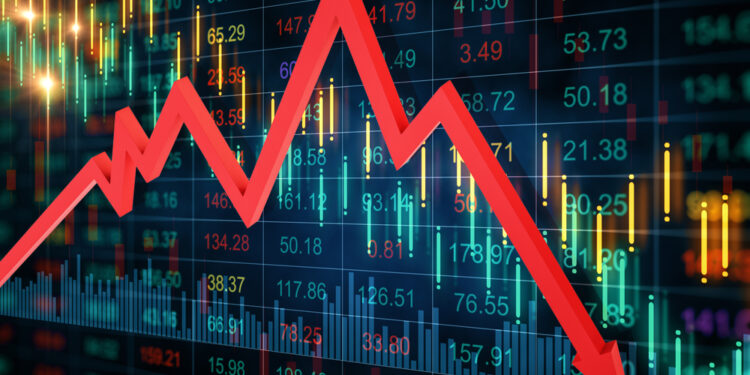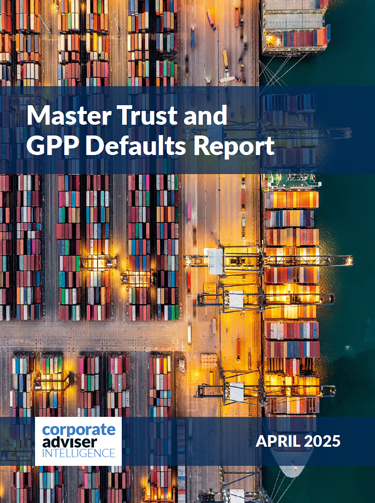Industry experts have painted a bleak picture of what the current market turmoil means for asset classes, with huge falls today compounding last week’s stock market carnage.
Fidelity’s Tom Stevenson describing last Thursday and Friday as amongst the worst two-day performance since the dot.com crash in 2000.
The S&P500 dipped into bear market territory today, falling by more than 20 per cent at one point, with the FTSE100 down 6 per cent at one point.
M&G says the prospects for inflation and therefore bonds remain unclear, and say fixed income markets had not priced in current fluctuations.
Fidelity International says recession fears are growing, but highlights the fact markets are falling from fresh highs.
Andrew Chorlton, CIO, fixed income at M&G says: “Whilst the negative impact on growth due to trade barriers seems clear, the impact on inflation and therefore the response of central banks is much less so. This is probably best exemplified by the Chair of the Fed’s recent comments in early April, stating that he felt the impact on inflation of any increase in tariffs would be transitory in nature, i.e. a one-off jump in prices. Just a few days later on Friday, he acknowledged that the impact of tariffs on both inflation and employment is unclear and is taking a wait and see approach. With so much uncertainty about the final picture of tariffs, the Fed’s determination to combat any increase in inflation expectations is evident. It’s worth reminding ourselves that the Federal Reserve’s mandate commonly known as the ‘dual mandate’ relates to employment and inflation, rather than stable or rising equity markets. Nevertheless, investors obviously feel that the risk to growth is such, that their mandate will be challenged and the market is now expecting five rate cuts from the Fed in 2025.
“M&G’s fixed income teams have been concerned for some months that credit spreads had priced in a lot of good news with little room for a negative surprise with spreads hovering around the most expensive levels we’ve seen since the Global Financial Crisis. This optimistic outlook spilled into government bond markets with little chance of any kind of slowdown priced in, and as a result we felt offered attractive valuations. In summary, the market wasn’t fully expecting this, so the starting point for this correction certainly contributed to the size of the moves we have seen in just a couple of days.”
Tom Stevenson, investment director at Fidelity International says: “Any hopes that last week’s two-day rout in global stock markets would be the full extent of market turbulence were confounded on Monday morning when first Asian and then European markets continued to plunge.
“Thursday and Friday were among the worst two-day performances in 40 years, only matched by market moves during the dot.com crash in 2000 and the financial crisis in 2008. But the selling continued after the weekend.
“Investors are now rapidly re-calibrating their expectations from optimism about growth and deregulation.
“The scale of the falls either side of the weekend evoke memories of the 1987 crash. What we are witnessing is a complete change of the market narrative and an immediate repricing of risk. Shares in Hong Kong fell as much as 13 per cent, Germany’s DAX dropped 10 per cent at the open, and the FTSE 100 added another 5 per cent to last week’s decline.
“It is worth remembering that stock markets ended that year higher than they started it. Keeping a calm head at times like these is difficult, but necessary.
“Recession fears are growing. Historically, market corrections are more likely to become sustained bear markets – defined as falls of more than 20% – in the context of a recession. It means that once this initial reset phase has run its course, investors will need to start to think in a calm way about how to position their portfolios for a tougher economic landscape ahead.
“At the very least it shortens the odds on the Trump tariff shock being the catalyst for the end of both the 30-month cyclical bull market since October 2022 but also the 16-year secular bull market since the financial crisis in 2008. The technique of buying the dips – taking advantage of temporary falls in prices – may not work so well in the immediate future.
“Investors with diversified, balanced portfolios have been spared the worst of the equity market plunge. Safe haven bonds, such as US Treasuries, have risen sharply in price as their yields have fallen. Yields and prices move in opposite directions. The yield on the 10-year US government bond has fallen below 3.9 per cent, which compares with a recent high of around 5 per cent.
“But there have been few other places to hide. Commodities have fallen sharply too. Brent crude has fallen to $63 a barrel, its lowest level in four years. Copper, which is often seen as a bellwether of global economic growth fell more than 7% on Monday to $8,690 a tonne.
“Gold, a traditional safe have in difficult times, has also fallen from recent all-time highs as some more leveraged investors have been forced to sell what they can, rather than what they might choose to. The dollar, often viewed as a port in any global storm, has also weakened as investors have started to question the US’s economic leadership in a post-globalised, more protectionist world of isolated trading blocs.
“One final consideration is how the world’s central banks will respond to the market turmoil. The likes of the Federal Reserve and the Bank of England find themselves in a difficult place. The dilemma created by last week’s tariffs is that they are likely to lead at the same time to both higher inflation and lower growth. That is a vicious cocktail for a central bank which is tasked with both supporting growth and capping inflation.
“It is hard to do both at the same time with the blunt instrument of interest rates. Cutting rates might seem like the obvious thing to do to promote growth, and the President has already called on the Fed to do just that. But fresh from the post-pandemic spike in prices, and mindful of what happened in the 1970s when inflation was let out of the bag by a complacent central bank, the Fed will be wary of moving too fast.”
Stuart Clark, portfolio manager of Quilter’s WealthSelect managed portfolio service says: “Today marks a very messy start to the week, with the stock market experiencing significant falls. This downturn comes amid a lack of positive news on tariffs, which has left investors uncertain and cautious.
“The outlook for earnings has considerably weakened, and sentiment has followed suit. However, the market’s weighing mechanism has begun to adjust via valuations. The key question now is whether we will overshoot equilibrium in this process.
“Given the current environment, it still feels too early to be adding risk into our portfolios. We are closely monitoring the potential size and duration of these tariffs, as well as any countermeasures that may be imposed. Until we have a clearer understanding, we believe it is prudent to maintain a cautious approach. While it is possible, and even probable, that we will see rallies within this downtrend, our focus remains on identifying the underlying opportunities amidst the broader market noise.
“Our slight risk-off positioning in equity has proven beneficial for relative performance, complemented by our holdings in precious metals and quality value strategies. Specifically, the Redwheel Global Income fund has performed well due to its combination of quality holdings and an underweight position in the US market. While it does have some exposure to tariff risk, it is not as significant as that of the broader global equity market. Additionally, our investments in precious metals have held up well, although we anticipate some volatility as these assets may be used as a source of liquidity for margin calls on other parts of portfolios.”





